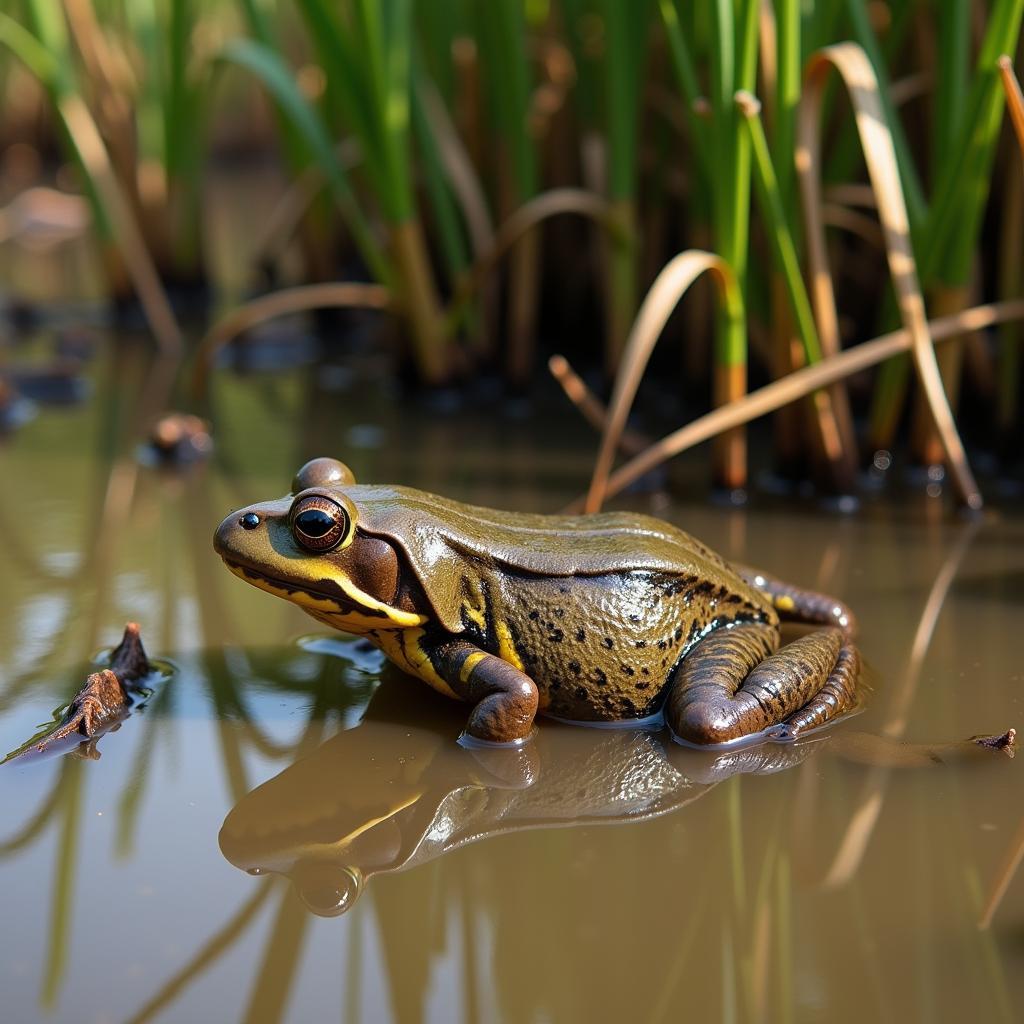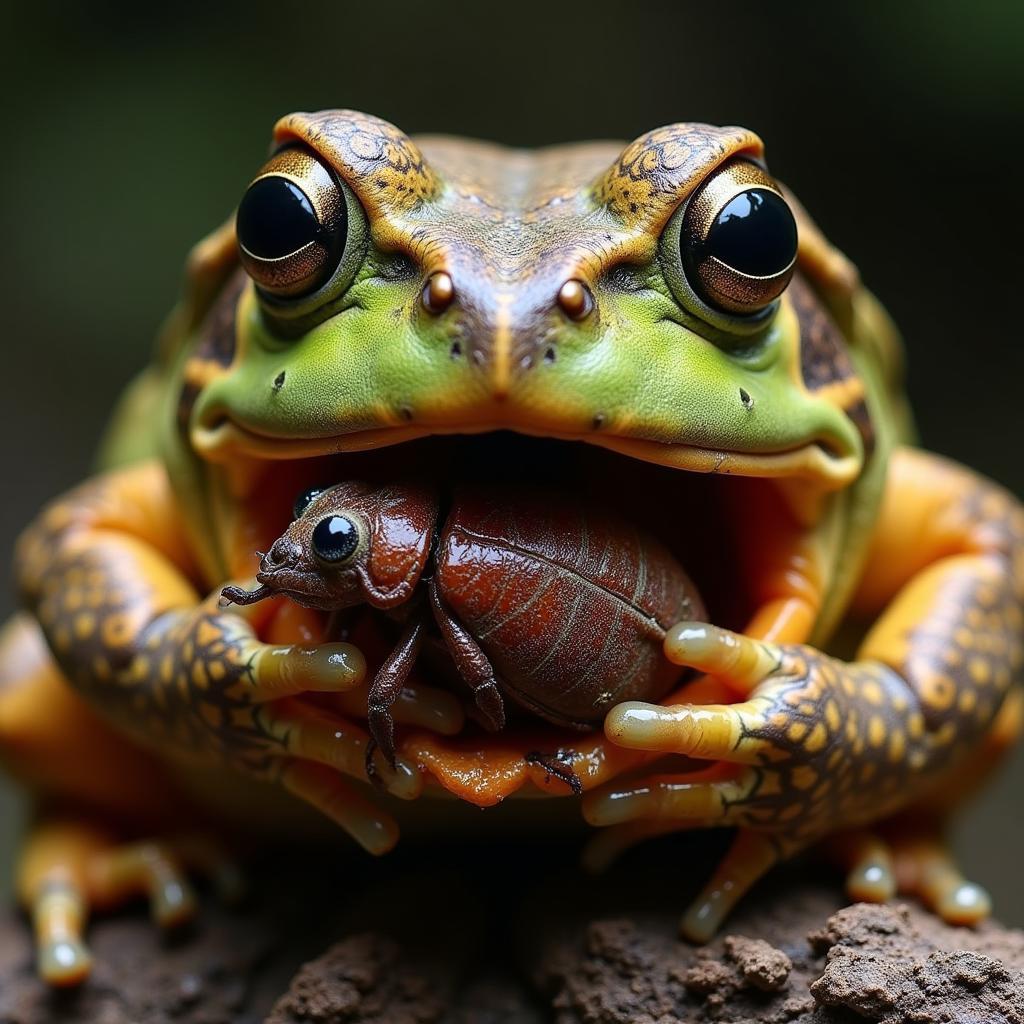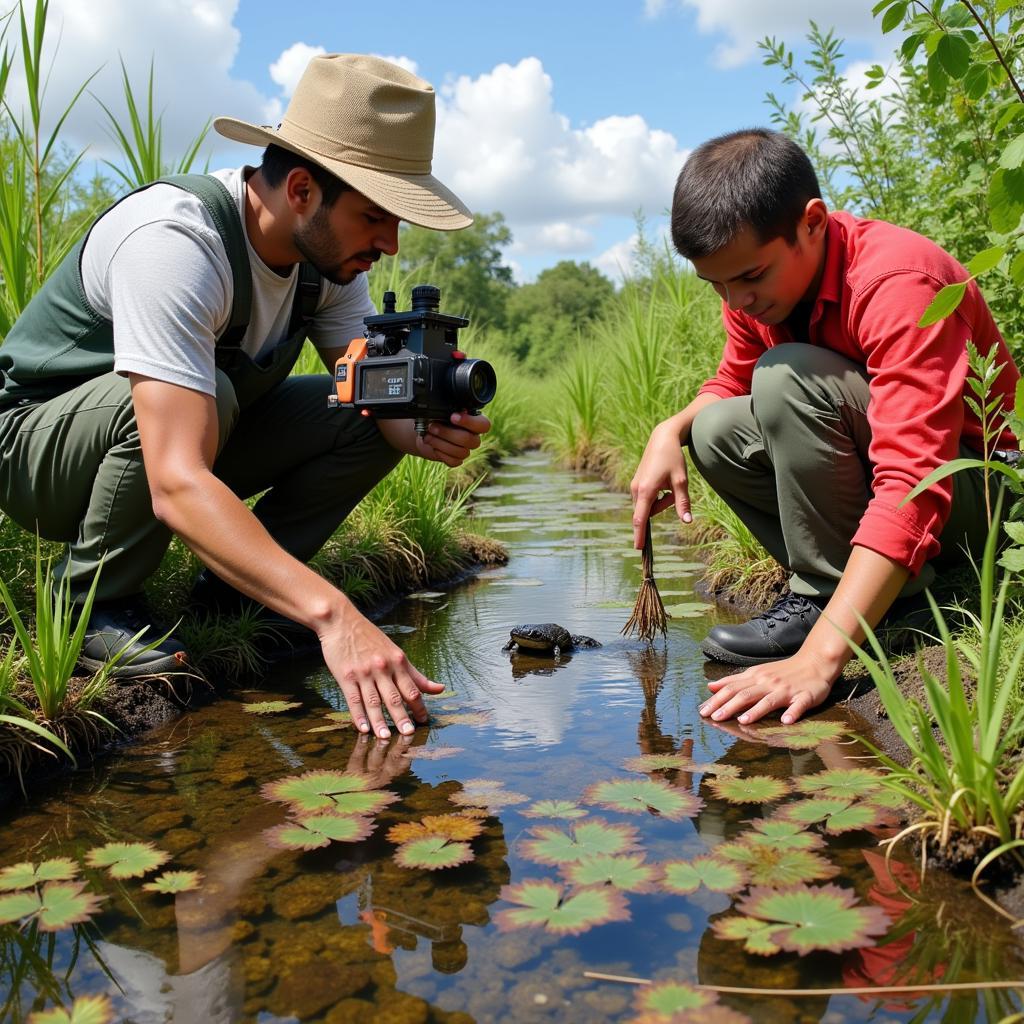African Bulldog Frog: A Comprehensive Guide
The African Bulldog Frog, also known as the pixie frog, is a fascinating amphibian native to sub-Saharan Africa. These large, predominantly aquatic frogs are known for their powerful bite and unique characteristics, making them a popular topic for both herpetologists and amphibian enthusiasts. This comprehensive guide dives into the world of the African bulldog frog, covering everything from their habitat and diet to their behavior and conservation status.
Understanding the African Bulldog Frog’s Habitat
African bulldog frogs thrive in warm, still, or slow-moving bodies of water such as swamps, marshes, and ponds throughout sub-Saharan Africa. They are particularly common in countries like Angola, Botswana, and Namibia. These frogs are highly adaptable and can even tolerate temporary drying of their aquatic homes, burying themselves in the mud and entering a state of aestivation until the rains return. This ability to survive harsh conditions contributes significantly to their widespread distribution across the continent.
These frogs are primarily aquatic, spending most of their lives in water. Their flattened bodies and powerful hind legs make them excellent swimmers, enabling them to navigate their watery environment with ease. They are ambush predators, patiently waiting for unsuspecting prey to come within striking distance.
 African Bulldog Frog in its Natural Habitat
African Bulldog Frog in its Natural Habitat
The African Bulldog Frog Diet: A Carnivore’s Menu
African bulldog frogs are voracious carnivores with a wide-ranging diet. They consume anything they can overpower, including insects, fish, small rodents, birds, and even other frogs. Their powerful jaws and sharp teeth allow them to effectively capture and consume their prey. Their feeding strategy involves patiently waiting, camouflaged in their surroundings, before ambushing their unsuspecting victims with a rapid strike.
Tadpoles, however, have a different diet. They primarily feed on algae and other plant matter, gradually transitioning to a carnivorous diet as they mature. This dietary shift reflects their developmental changes and increasing size, allowing them to hunt larger prey.
 African Bulldog Frog Consuming Prey
African Bulldog Frog Consuming Prey
African Bulldog Frog Behavior and Reproduction
African bulldog frogs are largely solitary creatures, except during the breeding season. Males become highly territorial and vocalize loudly to attract females. These calls can be quite loud and are often described as a deep, resonant croak. Once a female selects a mate, she lays a large clutch of eggs, which the male fertilizes externally. The eggs are then left to develop on their own, hatching into tadpoles within a few days.
Interestingly, African bulldog frogs exhibit parental care, which is uncommon among amphibians. The male guards the eggs and tadpoles, fiercely protecting them from predators. This protective behavior ensures the survival of a greater number of offspring.
Conservation Status and Threats to the African Bulldog Frog
Currently, the African bulldog frog is not considered an endangered species. However, like many amphibians worldwide, they face threats from habitat loss due to human activities such as agriculture and urbanization. Pollution and the introduction of invasive species also pose significant risks to their populations.
 Conservation Efforts for the African Bulldog Frog
Conservation Efforts for the African Bulldog Frog
Conclusion: Appreciating the African Bulldog Frog
The African bulldog frog is a remarkable amphibian, playing a crucial role in the ecosystems of sub-Saharan Africa. Understanding their unique characteristics, behavior, and the threats they face is essential for their continued survival. By supporting conservation efforts and raising awareness, we can help protect these fascinating creatures for future generations. Let’s continue to learn and appreciate the wonders of the African bulldog frog.
FAQ
- What is the average lifespan of an African bulldog frog? They typically live for 10-20 years in captivity.
- Are African bulldog frogs venomous? No, they are not venomous, but their bite can be quite painful.
- Can I keep an African bulldog frog as a pet? Yes, but they require specialized care and a large enclosure.
- What is the scientific name of the African bulldog frog? Pyxicephalus adspersus.
- How big do African bulldog frogs get? They can grow up to 10 inches in length.
- What do African bulldog frog tadpoles eat? They primarily feed on algae and plant matter.
- How can I contribute to the conservation of African bulldog frogs? Supporting conservation organizations and raising awareness about their importance can help.
Common Questions about African Bulldog Frog Care
- What size tank do I need for an African Bulldog Frog? A 20-gallon long tank is suitable for a single adult frog.
- What is the ideal temperature for an African Bulldog Frog enclosure? The water temperature should be maintained between 75-82°F.
- What type of substrate is best for an African Bulldog Frog tank? A sand or smooth gravel substrate is recommended.
Further Reading on AfricanLife
Check out our other articles on African wildlife:
- “Exploring the Diversity of African Amphibians”
- “The Wonders of African Wetlands”
- “Conservation Challenges in Sub-Saharan Africa”
For assistance, please contact us: Phone: +255768904061, Email: kaka.mag@gmail.com or visit us at Mbarali DC Mawindi, Kangaga, Tanzania. We have a 24/7 customer service team.
